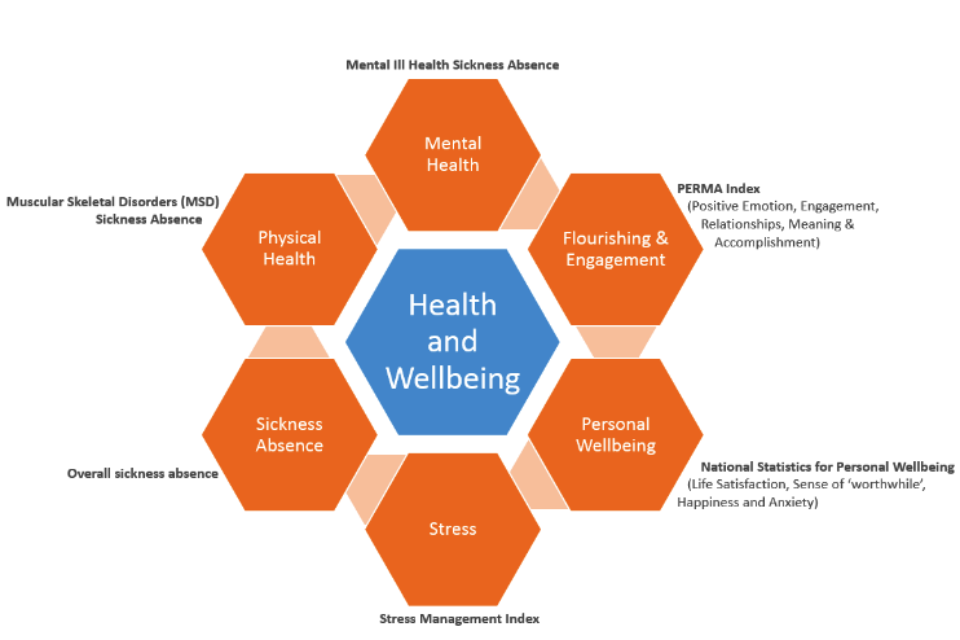One year after the publication of the Stevenson / Farmer Thriving at Work: a review of mental health and employers, Jonathan Jones, Permanent Secretary, Government Legal Department, and Civil Service Health and Wellbeing Champion, looks at the progress the Civil Service has made and the challenges still ahead.

In 2016, I was delighted to become the Civil Service Health and Wellbeing Champion and to establish a Senior Steering Group to drive forward my five key strategic health and wellbeing priorities across government. Together with Philip Rutnam, the Civil Service Disability Champion, we are ensuring that the Civil Service continues to make great strides in supporting staff with mental ill health so they can thrive and flourish at work.
Nearly two years on from becoming Civil Service Health and Wellbeing Champion, and a year after the Stevenson / Farmer report, I thought a progress update would be timely. We are:
- continuing to deliver our leading-edge Wellbeing Confident Leaders training, to equip all Senior Civil Servants with the knowledge and tools to embed wellbeing into planning, decision-making, communications and change management
- bolstering the mental health support available to employees – the Mental Health Sense Check was launched following the Thriving at Work review to enable departments, agencies and Non Departmental Public Bodies to benchmark their progress against the core and enhanced standards, and refine our approach to mental health support in the workplace
- piloting how proactive management support and occupational health advice can help employees experiencing mental ill health and musculoskeletal disorders (MSDs) stay in or return to work
- promoting a healthy lifestyle and active wellbeing
- continuing to raise awareness and break the stigma around mental health through initiatives such as: the first-ever Civil Service mental health conference; Mental Health Awareness Week, during which over 20,000 green ribbons were sold across our estate; and the launch of our Mental Health: A Guide for Managers
- ensuring senior level accountability, through a new specific performance objective relating to mental health for all Permanent Secretaries

Key measures of progress
How have we been measuring progress?
Last year, in collaboration with Civil Service departments, we developed an innovative Health and Wellbeing dashboard that tracks progress against six health and wellbeing indicators.

These indicators enable us to track progress in relation to my five key strategic health and wellbeing priorities. We expect them to improve over the medium to long term, as a result of the action we are taking both across the Civil Service and within departments.
In addition, we realise there are emerging issues that are being raised both in and outside the Civil Service, such as presenteeism, financial worries and 'always on' culture. We are exploring how we might measure and track these emerging issues reliably in the future.
What is the latest evidence?
It’s early days but, at a Civil Service level, two of our six key indicators have improved compared to their baseline levels at the end of 2016. The index of flourishing (PERMA) has improved. Overall sickness absence has reduced to 6.8 days AWDL (average working days lost) per full time equivalent.
Three indicators have remained the same. The Average Working Days Lost (AWDL) due to mental ill health is the same as 2016, with an average of 1.7 days lost per staff year. AWDL due to MSDs (musculoskeletal disorders) has remained at 1.1 days; and the Stress Index is better than in 2012 but the same as the 2016 baseline. There has been a slight deterioration in personal wellbeing statistics, with higher average anxiety levels and lower happiness in 2017 compared with 2016.
We can’t conclusively prove cause and effect – numerous factors influence wellbeing measures in the shorter term – but we expect the successful implementation of our actions to influence all these measures positively in the medium and long term.
All departments have rated themselves against the standards in the Thriving at Work report. Collectively, this assessment amounts to an Amber-Green rating. In practice, this means that most departments meet the majority of the standards, and have actions planned to fully meet the standards within the next 6 to 12 months.
What next?
There are clearly signs of positive progress and some challenges as well. The Civil Service is a large organisation, which provides us with opportunities and challenges, and it is vital that our health and wellbeing approach feels relevant to staff in departments.
To support us in this, departments are now developing their own dashboards to reflect their unique health and wellbeing challenges. These dashboards will feed into organisational governance boards to stimulate discussion and action and measure performance against the Permanent Secretary objective for mental health.
 But 'health and wellbeing' is not just another 'management' issue. It concerns the daily lives of everyone across the Civil Service, and we know it matters to our people. That is shown by the many local initiatives and activities, staff groups and networks and by the high level of interest in this subject. Expectations are rightly high of us as employers. Our aim is to continue the progress we have made, one year on from Thriving at Work, and I look forward to reporting again next year.
But 'health and wellbeing' is not just another 'management' issue. It concerns the daily lives of everyone across the Civil Service, and we know it matters to our people. That is shown by the many local initiatives and activities, staff groups and networks and by the high level of interest in this subject. Expectations are rightly high of us as employers. Our aim is to continue the progress we have made, one year on from Thriving at Work, and I look forward to reporting again next year.


3 comments
Comment by L Brown posted on
Is there any work being carried out around ensuring that civil servants, who travel for work, are able to exercise while working away? I have been advised that the current guidelines for hotel bookings do not allow access to fitness rooms to be considered - meaning that I am often either unable to do the recommended amount of exercise, or I'm forced to exercise outside, in unknown areas, compromising my personal safety.
Comment by Paul Magrath posted on
I would be interested to know how people are coping in the MOJ and HMCTS departments, where I know there is a lot of pressure and stress. In the old days, the Royal Courts of Justice hosted badminton courts in the great hall after work, but I don't think that continues. It was an excellent way to unwind and get some physical exercise at the workplace.
Comment by Gavin Thomas posted on
Thank you Jonathan for your continued support as the Civil Service Health and Wellbeing Champion. I welcome the Thriving at Work report and I am aware of the great work that Paul Farmer has done in promoting MIND.
Here in the FCO we have not only looked at increasing awareness and understanding in the UK but have also looked at our overseas Global Network. For National Work Life Week I am aware that a number of our Posts did some fantastic stuff. There is a really passion and appetite to learn more about Wellbeing and Mental Health and support colleagues, friends and family.
Love the idea about Wellbeing Confident Leaders. I know that Sir Philip Rutnam had a successful roll out of the Disability Confident Role Scheme.